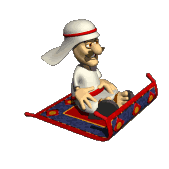Batik is both an art and a craft, which is becoming more popular and well known in the west as a wonderfully creative medium. The art of decorating cloth in this way, using wax and dye, has been practised for centuries. In Java, Indonesia, batik is part of an ancient tradition, and some of the finest batik cloth in the world is still made there. The word batik originates from the Javanese tik and means to dot. To make a batik, selected areas of the cloth are blocked out by brushing or drawing hot wax over them, and the cloth is then dyed. The parts covered in wax resist the dye and remain the original colour. This process of waxing and dyeing can be repeated to create more elaborate and colourful designs. After the final dyeing the wax is removed and the cloth is ready for wearing or showing. Contemporary batik, while owing much to the past, is markedly different from the more traditional and formal styles. For example, the artist may use etching, discharge dyeing, stencils, different tools for waxing and dyeing, wax recipes with different resist values and work with silk, cotton, wool, leather, paper or even wood and ceramics. Batik is historically the most expressive and subtle of the resist methods. The ever widening range of techniques available offers the artist the opportunity to explore a unique process in a flexible and exciting way. |  Elephants bathing at Pinnawela, Sri Lanka Rosi Robinson  Dandelion Ley Robin Paris  Fish Lee Creswell |
Selamat datang di blognya orang Kediri....
Kami berusaha membuat anda senyaman mungkin....
Jangan lupa komentarnya ya.....
Isi juga buku tamunya.....
Salam dari Blogger Kediri....
=> Abdil Haq Aqimuddin Qowi <=
=> Raden Mas Ciput <=
Kami berusaha membuat anda senyaman mungkin....
Jangan lupa komentarnya ya.....
Isi juga buku tamunya.....
Salam dari Blogger Kediri....
=> Abdil Haq Aqimuddin Qowi <=
=> Raden Mas Ciput <=
Rabu, 16 Maret 2011
Langganan:
Posting Komentar (Atom)


Tidak ada komentar:
Posting Komentar